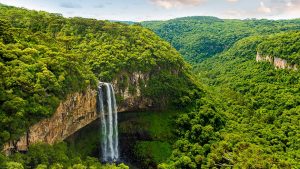This year in ASTU, we have explored many texts related to trauma and violence. American Sniper, based on the biography of United States Navy SEAL veteran Chris Kyle, was perhaps one of the most moving. The film is focused on the war in Iraq, but includes heartbreaking moments for Chris Kyle and his family even once he has returned home. We see traces of his PTSD and other underlying health issues caused from the war but they are not deeply explored, showing how Chris does not want to admit the war damaged him. Other moments, like when he is on the phone with his pregnant wife and abruptly drops the phone abandoning the call leading her to believe he has been killed, made me realize that I truly cannot imagine the feelings experienced by soldiers and their loved ones.
In some senses, American Sniper reminded me of Joy Kogawa’s Obasan, which we studied earlier in the year. This is because of the lingering trauma that Chris Kyle and Naomi both face, and their desire to make things right. In American Sniper, Chris talks about he wishes he could have saved more people, despite the hundreds of lives that he did save. He wanted to return to war so he could continue to serve his country. In Obasan, Naomi did not let what happened to her family be ignored or just swept under the rug. She fought for redress and compensation for the suffering and discrimination her family faced. While they are in drastically different situations, they both show that they are willing to put up a fight.
There is a point in the film where Chris has his gun aimed at a child, who is about to pick up a weapon. Chris is repeatedly saying to himself, about the child, “Don’t you dare pick that up,”. If the child picks it up and goes to use the weapon, Chris will be forced to shoot and kill him to prevent danger to his fellow troops. Luckily, the child puts it back down right after picking it up, and Chris does not shoot. If he had killed that child, we know that it probably would have haunted him for a very long time. I connected this to Phil Klay’s Redeployment. Klay states how him and his fellow soldiers shot dogs, and he could not stop thinking about it, or thinking about his own dog at home. When Chris is in this situation in American Sniper, at this point he has children at home. Just like having a dog at home made it harder for Klay to get over hurting them, having a child at home would make it immensely more difficult for him to harm a child, even though we are shown him harming a child before he had kids of his own.
If I had watched American Sniper before taking this ASTU class, I probably would have seen it the way the producers wanted us to see it – as viewing the United States as heroic and inherently good. However, after studying post-9/11 culture and the ‘war on terror’, I saw the United States as trying to assert their dominance and power, not as being intrepid. Because America saw Iraq as a threat, they invaded, killing hundreds of thousands of Iraqis. This is not heroic, it is simply them showing that because they can kill, they will.
In conclusion, I did enjoy American Sniper, and I found it very touching at times. However, films about war and the United States should be critically thought about and carefully looked at, as things are not always what they seem, and there is more than one side to everything.
Works Cited
“American Sniper.” Warners Bros. Pictures, 2014.
Klay, Phil. “Redeployment.” Redeployment, Penguin, 2014, pp. 1-16
